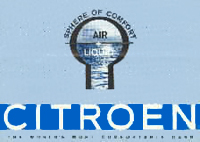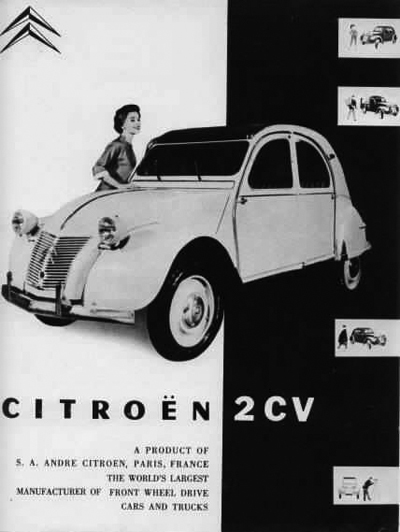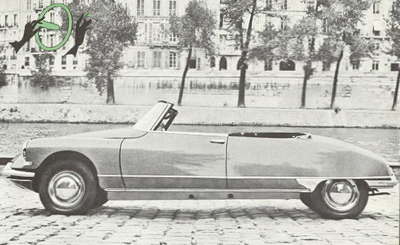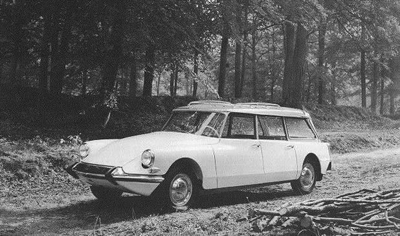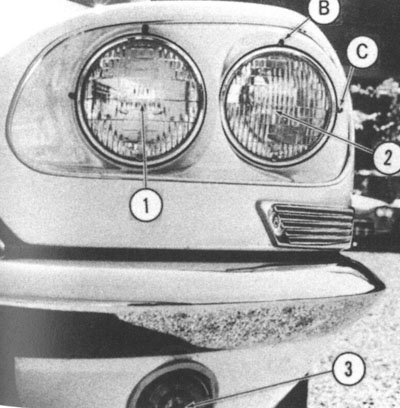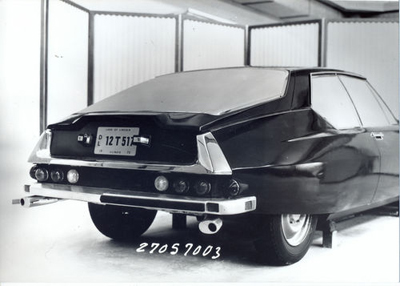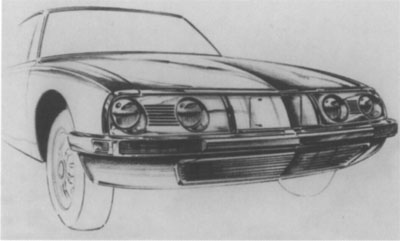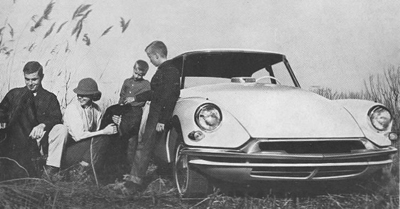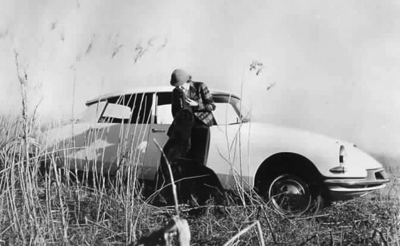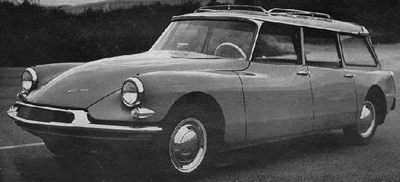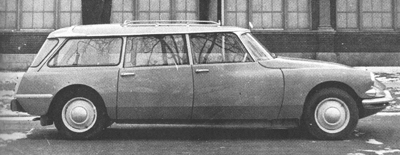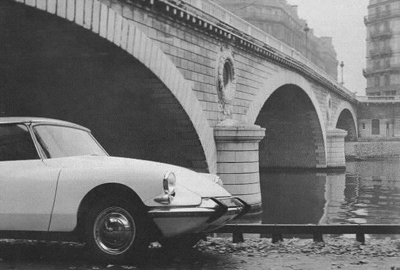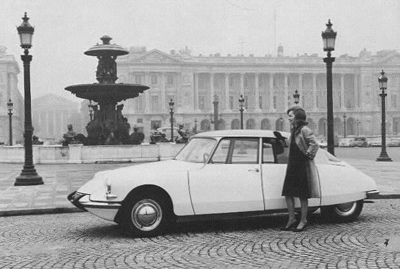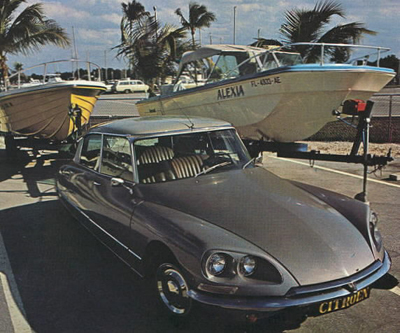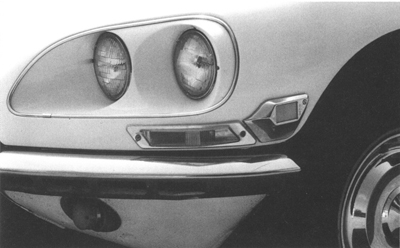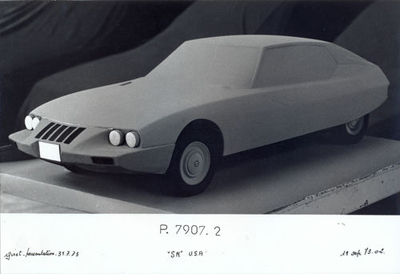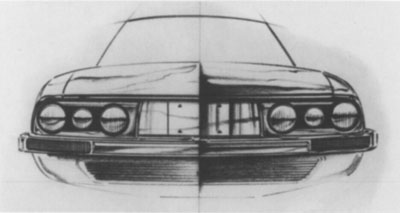 |
Citroën in the USA
|
|
|
During
the nineteen twenties and thirties, André Citroën thought of selling
his products on the other side of the Atlantic and a few rare
advertisements appeared in the press. In 1931 he even considered
building an enormous factory. In 1938, the Challenger Motor Co of Los
Angeles CA offered the 11CV légère for $895, importing the cars from
Europe. Others did the same - Campbell Motors of South Pasadena CA who
also published proper catalogues inspired by those produced in Slough (right
- click on image to see large version - will open in new window).
Shortly after the War, a few rare Tractions were to be seen in the USA,
most having been imported by GIs who having liberated France, fell in
love with these cars. But the official importation really only began
with the DS.
At the beginning of the nineteen fifties, the Citroën Export Department
was divided into Export Europe under the control of M. Hospital and
Louis Garbes and la Grande Exportation under the control of Michel
Koundadzé with assistance from Claude Alain Sarre, André Noël and
Alfred Lucas.
One of their inspectors, Michel Paradis was sent to the West Coast of
the USA. There he brought the idea of importing some thirty or so
Tractions despite the total lack of any service infrastructure. Only
two or three were in fact sold and M. Paradis used the services of an
expatriate Belgian garage owner, Albert Bonfond who became the boss of
the Citroën after sales department for the West Coast, the business
being situated in Los Angeles. The remainder disappeared.
But let us leave the Tractions sitting on an anonymous quayside and
look at how Citroën's economic activities started in the USA.
In an era when when the delivery of cars was fitful, numerous
expatriate French people living in North America returned to France for
their holidays. The car in France was a luxury object, difficult to
obtain whereas in the States, the car was already a consumer product
which was readily available. For them and eventually for all American
tourists, Michelin, Citroën's owners created a company called Citroën
Car Corporation, a subsidiary of the American company Technical
Research which was run by Arthur Lowenstein and Jean Ostheimer (the
latter being the person whose claim led to André Citroën's business
being put into liquidation in 1934). The role of the Citroën Car
Corporation was to sell cars to American tourists
in France.
|
 |
|
|
|
After
receipt of the customer's order (which, all importantly featured a
guarantee of re-purchase by Citroën), the car, fitted with its famous
TT plates (temporary export plates) would be delivered to the customer
when he set foot on French soil. The car would be bought back at the
end of his stay. The reason for this was that most production had to be
for export and there was such a shortage of new cars that secondhand
ones changed hands for more than the list price of an unobtainable new
one. Such a wonderful paradox must be the dream of every modern motor
manufacturer! Shortly before the launch of the DS, in 1955, a brochure,
(ref. AC 5133) prominently featuring the Eiffel Tower was launched.
The arrival of Charles Buchet
The
Citroën Car Corporation was to be the launchpad for Citroën's
operations in the USA. The man given the task was Charles Buchet, who
had joined Citroën in 1952 in Commerce but who quickly moved into the
Export department. He left for the USA in March 1954.
His first
task was to locate the missing Tractions and with the assistance of
Armand Garnier, he found each and every one although some were in a
piteous state. Some were still under Customs' control, having been
abandoned at the port since the cost of storage soon reduced the value
of the cars to zero.
Charles Buchet set about reviving the Citroën Car Corporation by making
the sale and buy back system better and more attractive. Indeed the
financial system he created is that of lease and buy back still
practised by the likes of Europcar and Hertz. The monies earned allowed
the financing of the infra structure that would become Citroën USA who
would import cars into the USA. The DS would be the product.
Charles Buchet set off for New York at the wheel of a 15 Six - one of
those reclaimed from the docks. He also performed this drive in a 2 CV
which he had had sent over from France and he often swore that he would
have had more success with this car than with the DS! His boss
suggested that the car's plain grey paint be replaced with something
more to American tastes - a shrimp pink! Buchet's compromise was a
light green paintwork - a particulalry popular colour amongst Detroit's
products that year. This car was used in monochrome pictures in the
Company's product brochure "The sensational multi-purpose car"...
Citroën Cars Corporation
Setting up Citroën Cars Corporation in the United States
proved to be very difficult as they started with nothing.
However an east coast headquarters was established in New York and then
the west coast headquarters in Los Angeles.
The complete infrastructure of these headquarters had to be created, a
sales department, a repair and parts department, personnel had to be
hired and trained, not on just any car but the DS-19.
There were no repair or parts manuals in the beginning, in any language
– never mind English! A dealer network also needed to be created and
trained for this vast country.
Buchet started with an office on 5th
Avenue in New York City, this was in the same building where Air France
had their offices. Both headquarters had their share of problems but
the east coast was at a major disadvantage due to their premises.
Once the DS had officially been announced in Paris it meant that the
New York headquarters would have to expand, not only did they need a
showroom but a workshop would also be an immediate necessity.
They ended up with a nice showroom at 300 Park Avenue and a totally
inadequate workshop located in Long Island. Not only were these repair
facilities too small but the parking situation was non existent. The
technical man in charge on the east coast was Michel Rappellini who was
under the direction of Charles Buchet.
In the west the situation was the opposite, they ended up with a nice
premises on Wilshire Boulevard in upscale Beverly Hills in Los Angeles.
The offices, showroom, repair and parts facilities were all in one
location. The commercial director for the western division was Armand
Garnier and the engineer was Claude Braux. Albert Bonfond was hired as
service manager in 1956, an ex-patriate Belgian who had owned an
independent Citroën repair shop in Brussels prior to emigrating to
America. Braux drove the first DS-19, chassis # 129, to arrive in New
York. He drove to Chicago in sub zero temperatures in January of 1956
along with Luigi Chinetti the Ferrari importer for the US and three
times winner of the 24 heure du Mans. The first DS was to be exhibited
at the 48th Chicago Auto Show.
In the beginning both the east and the western headquarters had issues
to deal with, as did the rest of the world where the vehicle was
marketed. One needs to remember that this was a brand new vehicle with
technical advances well ahead of its time. Of course this would bring
plenty of new problems as the DS went through its growing pains. In
regards to the North American continent, not only being vast in size
but also very different in climate, the eastern portion of the US dealt
with severe winter conditions, which affected the D-series vehicles
technically and structurally while the west was dealing with dashboards
warping in the mid-day sun! Although the east and west had different
issues to deal with, the situation was the same, they both still had to
create a dealer network and be able to support that network.
There were only a handful of people within the Citroën Cars Corporation
network that even had a slight inclination of how this new DS operated.
Luckily some assistance was on the way – Paris sent four young
gentlemen who had been working with the DS at the Quai de Javel, Paul
Baert and Jacques Berteau went to New York and Claude Guyot and Hubert
Villedanné went to Los Angeles to spend six months in the US to get
things rolling. Once things did get going both headquarters did
establish a technical support team to train and assist new dealers. To
get new dealers was always a challenge, you had those who signed up for
a year or two then dropped Citroën for a more lucrative and less
challenging make and those who stayed on till the bitter end.
Citroën Cars Corporation’s attempt at securing a portion of the US
market was not without pain, but through the years they did manage to
secure a loyal clientele and had one of the better reputations for
after sales and service and handling of warranty problems amongst
French products sold in the US. Unfortunately this was not enough to
stop the demise of the make on the North American continent.
Besides the DS and the ID, Citroën also introduced the 2CV, the AMI-6,
and handled the Panhard. In the late sixties they introduced the
Mehari, all with limited success. It wasn’t until the SM was introduced
that Citroën was really noticed. Although just over 2000 units were
sold in its short lived US presence, this vehicle also brought its
share of problems; not only technical but there was also an ill feeling
amongst the dealerships as not all were chosen to sell the SM. This
included some of the old dealers that had stuck it out through thick
and thin over those high profile dealers with fancy premises that took
on the Citroën SM but dropped them just as fast!
Unfortunately the beginning of the end was already around the corner, a
combination of the oil crisis and Citroën’s own financial problems led
to the demise of the SM and by 1973 there were no new D-models for
sale. The staff of Citroën Cars Corporation persevered at trying to get
the new CX into the US market, and there was some hope but this hope
soon faded in late October of 1977 when René France, President of
Citroën Cars Corporation, was summoned to Paris and told to close all
North American operations.
A number of businesses - Trend, CINA and CXA continued
to sell Citroëns in the USA after Citroën closed down its operations.
Over the last thirty years, there have been consistent rumours about a
return but nothing has come of it.
|
|
|
|



